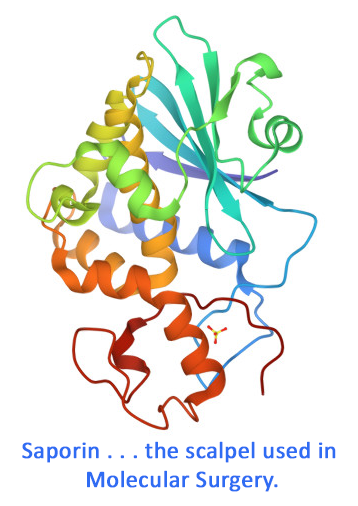Exenatide is a synthetic version of exendin-4, a hormone found in the saliva of the Gila monster. It displays biological properties similar to human glucagon-like peptide-1 (GLP-1), a regulator of glucose metabolism and insulin secretion. Exenatide is a 39-amino-acid peptide that enhances glucose-dependent insulin secretion by the pancreatic beta-cell, suppresses inappropriately elevated glucagon secretion, slows gastric emptying, presents a subtle yet prolonged effect to reduce appetite and promote satiety via hypothalamic receptors, and reduces liver fat content. Exenatide demonstrates a 50% greater half-life than native GLP-1 in vivo and is DPP-4 resistant.
Ex4-SAP is a bonded conjugate of exendin-4 peptide, a glucagon-like peptide-1 (GLP-1) agonist and the secondary conjugate Streptavidin-ZAP (IT-27) containing the ribosome-inactivating protein, saporin. It eliminates cells expressing the GLP-1 receptor.
Ex4-SAP-SAP is available individually (Cat. #IT-90) or as a kit (Cat. #KIT-90) which includes Ex4-SAP and Blank-Streptavidin-SAP (Cat. #IT-27B).
keywords: exenatide, exenatide-4, Ex4-SAP, GLP-1-SAP, Exenatide-4-SAP, glucagon, insulin, GLP-1 receptor, GLP-1 agonist, human glucagon-like-peptide, exendin, exendin-4, satiety, diabetes, pancreas, beta-cell, appetite, gastric emptying, glucose, satiety, hypothalamic receptor, glia monster, DPP-4, liver fat, metabolism, streptavidin, saporin, eating, appetite, brain, neuroscience


Reviews
There are no reviews yet.